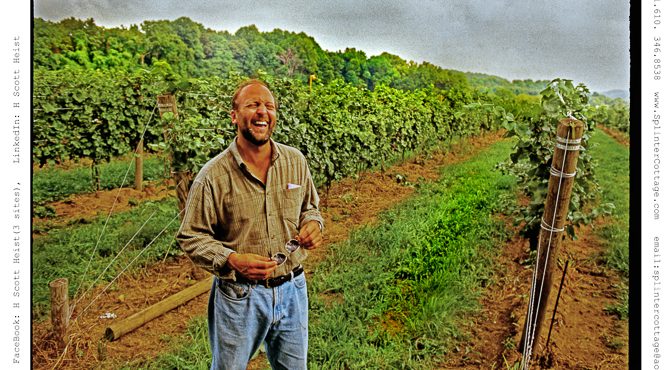A work in progress……
From a conversation with my friend Les Whitten, the journalist and novelist, before a student senior round table where we discussed the relevance of journalism in future and how the words are becoming fewer; visuals more prevalent. My thoughts were rather surprising to Les as I saw both as Compatible languages and the problems seem to be within the trade school understanding of opposing hierarchies . As an example we used a recent magazine story I did on winemakers, On the grand occasions when we were each other’s town, Les & I always shared wine. And most importantly the stories that went with it. On certain occasions, I was able to bring wine from vineyards were I worked.
This comes from my short and notebook made during that discussion. We began with an agreement that we came to an earlier conversation on how all journalism is dependent on people talking to other people. And how for responsive readership, somehow to have a conversation, the folks in the story and the folks reading this story have to talk … Have a dialogue. I suggested the merger of disciplines within our understanding of language.
It was not unusual for a feature work to be described as a portrait in words. Considering how many portraits I made in film (and also words, as I began as a writer) … It was interesting to discuss feature stories with the means of inscription coming from different tools.
Finding the appropriate time to return to that notebook, and once again the means of truthful communication. Why bother discussing liars. They make a mess out of everything.
/////////////////////////////////////////////////////////
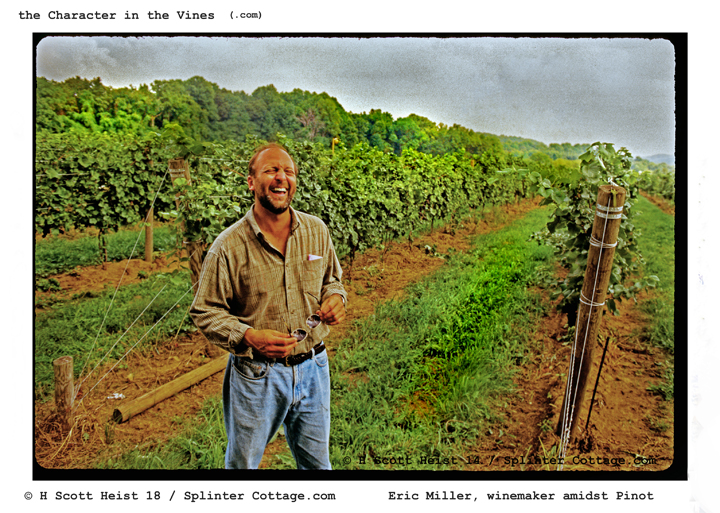
Were it not possible to photograph people, we would have a different history today. Now looking at the radical circumstance the photographing people with both leaving healthy .. . where inappropriate talking … can come to a terrible end.
Social distancing is nothing new. Was always a social grace involved in allowing others their space. To assist somebody in crossing road, many of us were taught to grip somebody’s arm below the elbow. Nothing untoward that way. There’s also protocol toward photographing other people, particularly people who are not models with the expectation of the common courtesy of the day.
As I’ve been going over the work of the past generation plus, I found thousands of portraits. None of which were based upon intruding someone else’s . The portrait something stand in for anothers face, focusing a third-down photograph to the other person’s eyes and then glancing in a circular motion to see what the person is doing.
This is one of my favorites, as I have personal affinity for the wine culture, with that in common, there’s the opportunity to tease a little, amuse, and relax your the person into a semblance of a relationship.
I’ve always structured my compositions as English language sentences. Her winemaker friend the subject, vineyards the predicate, the nature of his gesture adverbial in nature and the overall environment adjective and object. The composition allowed room to go over a magazine binding with space for drop-in as caption.
But most important, is that this is a reflection of Eric himself. The better the winemaker the more likely the wine reflects their personality. So I’ll drop a few other winemakers portraits in to extend the conversation. Here we were discussing Pinot Noir. At its best gentle, a little earthy, and complex. The subject was” the character in the vines”.
A final note back to the social distancing beginning … The best portraits are rarely the closest … In the social distances under discussion fit very nicely with the well mannered editorial portrait. Even more so today with the perspective of the digital cropped sensor.
I rarely talk about cameras for technique, or forgive me visible photoshoping. I am interested in composition, as Albert Camus said: ” an actor divorced from setting is an absurdity.” Most of the folks I’ve met have been seriously involved in one manner of art and aesthetic or the other. This portrayed: “the character in the vines.”. Hardly an absurdity.
Buy the way, we were discussing an appropriate cheese for this Pinot Noir.
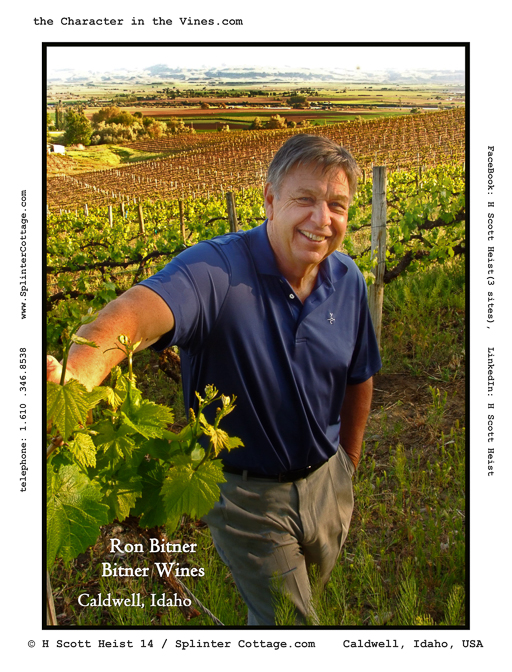
Mr. Ron Bintner, near Boise Idaho, lives in an area known for people of Basque heritage. Always loved the southern French northern Spanish wines and could certainly taste the influence here. Many of my favorite European wines from that area are fermented in concrete, lacking the bite of the oak barrel. I noticed some Oak in his wine and we were about to discuss it when a cell phone rang. I have to write him.
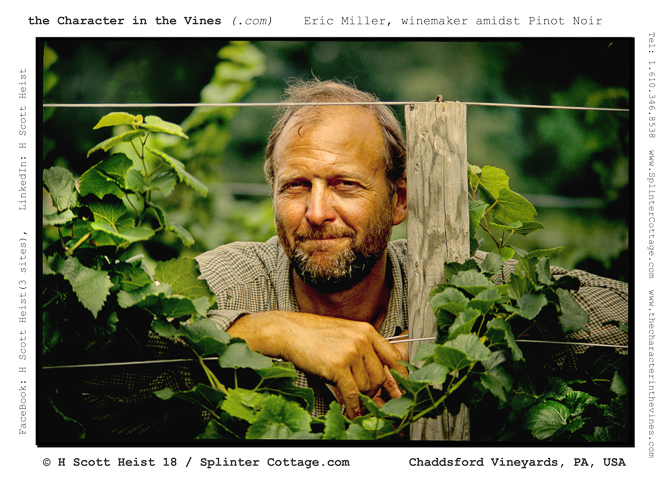
Again, another view of Eric, this is the nature of creating a conversation with the viewer of the magazine or other media. Certainly a great part of character is how one listens … So as we piece the story together, my feeling is if more than one photograph is going to be run as portrait one should be kinetic and sharing, another a willingness to consider the conversation taking. All the compositional points mentioned are here also, it photographs and the character they represent, a very different but still “family”.
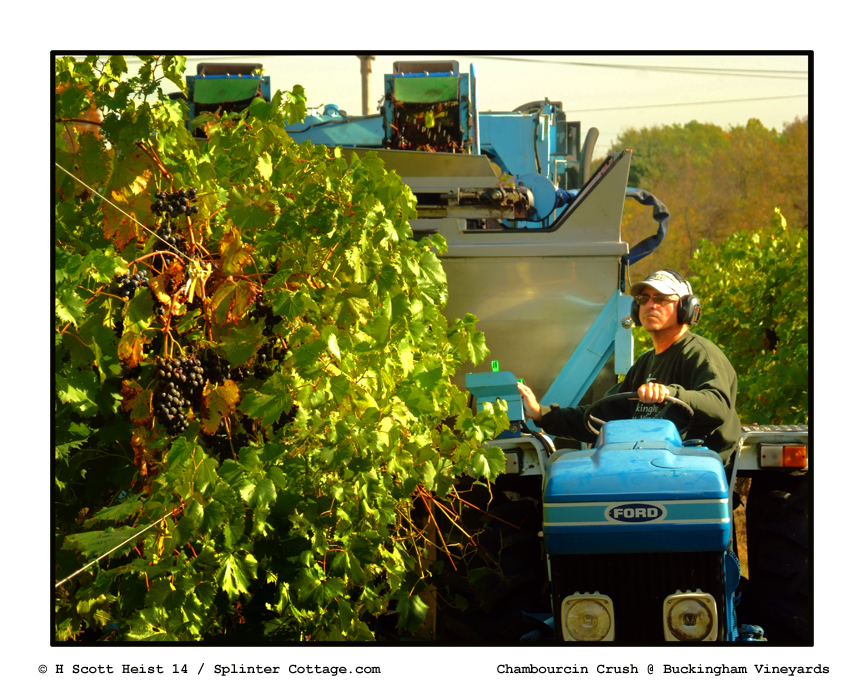
And another character portrait, is folks actually working. Again, the concentration becomes part of the visual sense is in the earlier portraits. I will also include some of the hand harvest is both require the same care not to do damage to an entire year’s effort.
The pumping of of the crushed juice through a hose to the fermentation vat also uses the portrait format to create character subject without great visual interest.
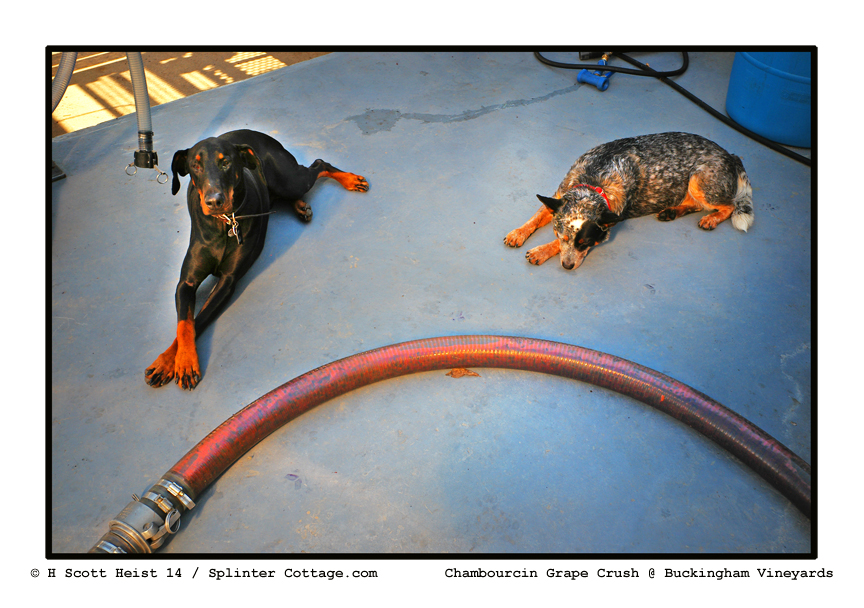
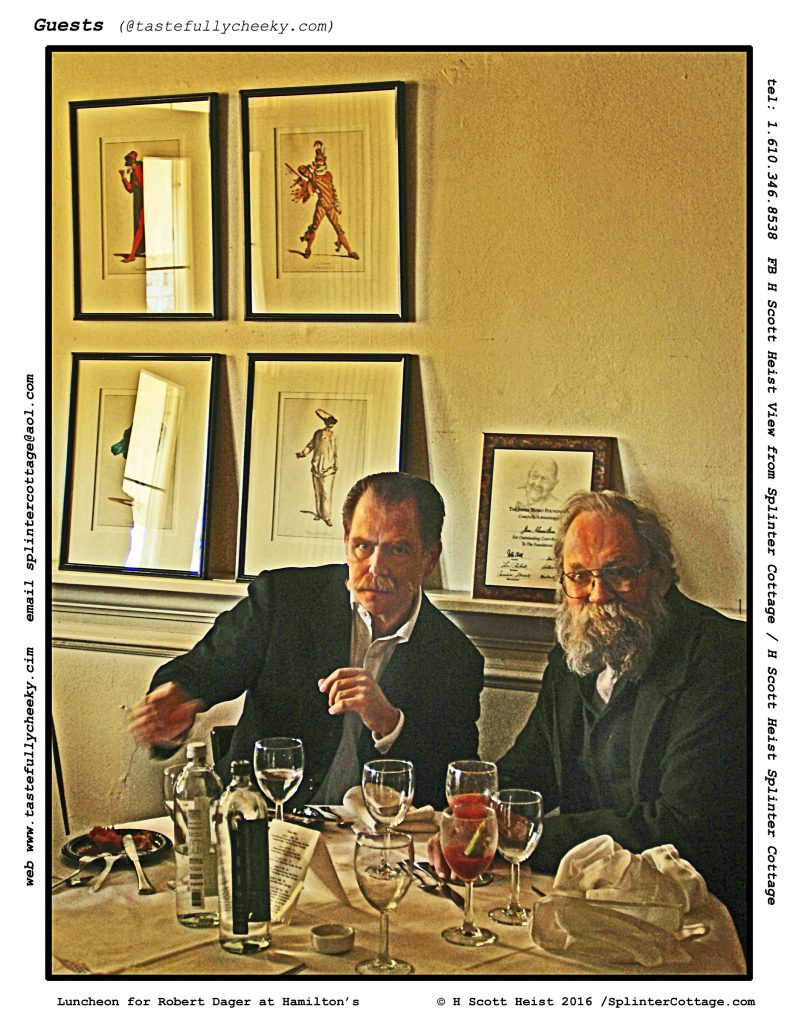
Of course, the final portrait personalizing wines character is its relationship to food celebration. It’s not necessary to have everybody smiling at the same time holding a glass in the air .. Moving the wide over to advertising circumstance is just fine for advertising, but the nature of the portrait is different for an editorial communication. (And that certainly be used for high impact advertising.) I go back to the old dictum hammered in repeatedly at Associated Press: “is it interesting?”
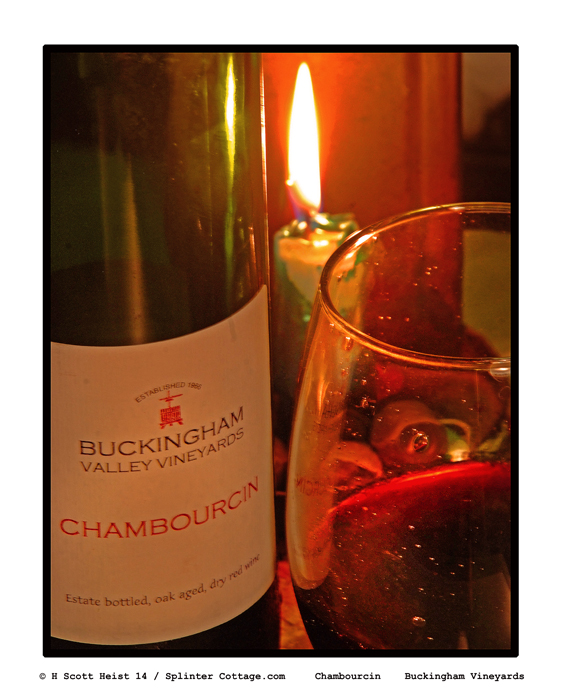
The intimacy of the wines character itself becomes a portait , by candlelight, to complete the statement.
Of course, this is another literary technique called personification.
